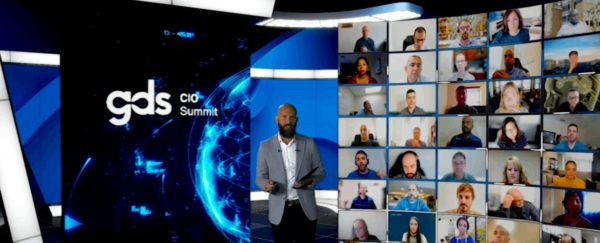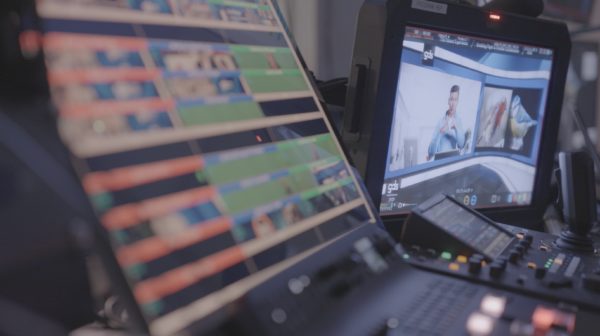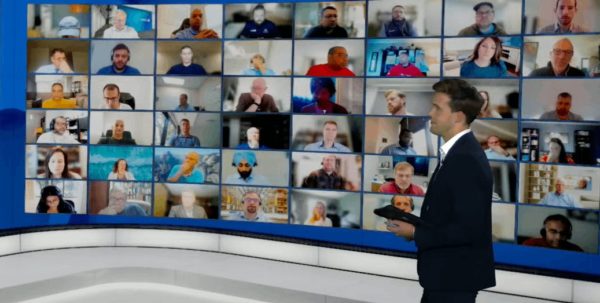It’s the latest development in the world of generative AI, it’s attracted billions of dollars in funding from tech investors, and it debuted in late November. Chat GPT has quickly turned into a viral sensation. The technology automatically generates text based on written prompts, in a fashion that’s now much more advanced and creative than chatbots of the past. It’s capable of understanding natural human language and generating impressively detailed human-like written text. But can you recognize the difference between AI and human work? Take a look at the two essays below…
Predicting the biggest business trends for 2023 is a challenging task, as the future is always uncertain and can be influenced by a wide range of factors. As we enter the new year, it is important for businesses to be aware of the trends and changes that are shaping the business landscape. Here are five of the biggest business trends for 2023:
Digital transformation: The COVID-19 pandemic has accelerated the shift to digital, and this trend is expected to continue in 2023. Companies of all sizes are investing in technologies such as cloud computing, artificial intelligence, and the Internet of Things to improve efficiency, drive innovation, and enhance customer experiences. Digital transformation allows businesses to automate processes, gather and analyze data, and improve communication and collaboration.
Sustainability and social responsibility: Consumers are becoming increasingly aware of environmental and social issues, and businesses are under pressure to adopt more sustainable and responsible practices. This includes reducing carbon emissions, using eco-friendly materials, and supporting local communities. Companies that can demonstrate a commitment to sustainability and social responsibility are likely to attract more customers and employees.
Remote work: The pandemic has forced many companies to adopt remote work, and it is likely that this trend will continue even as lockdowns ease. Remote work offers benefits such as lower overhead costs, access to a wider pool of talent, and increased productivity. However, it also presents challenges such as managing remote teams and ensuring that employees have the resources and support they need to be productive.
E-commerce: The growth of e-commerce has been explosive over the past year, and it is expected to continue to thrive in 2023. Companies that are able to effectively sell their products and services online will have a major advantage. This includes developing a strong online presence, offering a seamless shopping experience, and leveraging social media and other digital marketing channels.
Personalization: With the proliferation of data and the rise of artificial intelligence, businesses will be able to offer more highly personalized products and services to all of their customers. This includes personalized marketing, product recommendations, and customized experiences. Personalization allows businesses to better understand and meet the needs of their customers, leading to increased loyalty and sales. In addition to these trends, businesses will also need to adapt to changing regulations and geopolitical developments. For example, the ongoing trade tensions between the US and China are likely to continue to impact global supply chains and business operations.
Overall, the business landscape in 2023 is likely to be defined by technology and the need for companies to adapt and innovate in order to stay competitive. Those that are able to embrace digital transformation, sustainability, remote work, e-commerce, and personalization will be well-positioned for success. It will be important for businesses to stay up-to-date on these trends and be flexible enough to pivot as needed in order to meet the changing needs of their customers and adapt to a rapidly evolving business environment.
As we wrap up this year for Christmas, it’s only right that we should gift you with the top trends that industry leaders are gearing up (or perhaps bracing themselves) for in 2023.
Digital transformation: In 2023, we will see innovation and development in transformative technologies such as artificial intelligence, the internet of things, virtual and augmented reality, and cloud computing. These do not exist in isolation from each other, and we will see the boundaries between them blurring. New and exciting solutions for augmented working, hybrid and remote working, business decision-making, and automation of manual, routine, and creative workloads combine these technologies in ways that enable them to enhance each other.
Immersive customer experience: Some scoff at the metaverse as marketing fluff, but customers crave experience above all else – and nothing screams experience like full immersion. The immersive technology market was valued at nearly $28 billion in 2021. It’s expected to swell to more than $252 billion by 2028, according to Statista, so it’s one to keep tabs on.
Inflation and supply chain security: Despite resolutions, the economic outlook for most of the world in the new year does not look the healthiest it’s been. We’re told by experts to expect ongoing inflation and subdued economic growth. Many industries are still plagued by supply chain issues that emerged during the global shutdowns caused by Covid-19 and have only got worse due to the war in Ukraine. To combat this, leaders should expect some ‘us and them’ mentality among internal teams when it comes to the rights for resources. Instead, alignment and collaboration need to stay top of mind if they want to build resilience and keep an eye on the org’s north star.
Sustainability: The Global Sustainability Study report shows that 85% of people worldwide have changed their purchasing habits to become more sustainable in the past five years. This means companies need to make sure that their environmental, social, and governance processes are moved to the centre of their strategy. This should start with measuring the impact business is having on the environment, then move to increasing transparency, reporting, and accountability.
The talent challenge: Over the past year, we have seen huge movements of talented people, referred to as the great resignation and quiet quitting. This has put pressure on leaders, and 96% say attracting and retaining critical technical talent is a top priority, according to research by Gartner. They have to ensure they are providing attractive careers, flexibility of hybrid work, and an enticing company culture. Offering people fulfilling work, ongoing opportunities to grow and learn, flexibility and diverse, value-oriented workplaces will all be essential in 2023.
Cyber-Security: The future of cyber security is looking both exciting and challenging. Exciting, because of the potential for new technologies to help entities better protect themselves and their data. Challenging, because of the increasing sophistication of cyber-attacks. Another challenge is the increasing use of cloud services, which provide companies with great flexibility and scalability but introduce new privacy security risks.
To sum up, businesses that can adapt to these trends and stay ahead of the curve will be well-positioned to succeed in the coming year.
Did you get it right? It’s certainly food for thought as the technology ever-evolves. Content generated by AI is fast becoming more coherent and human with every passing day. In fact, there is a good chance you’ve consumed articles that AI partially wrote, without even being aware of it. Studies suggest that AI will create an estimated 90% of content by the year 2026, according to reports by Futurism. However, it will be long before AI completely replaces human writers. Empathy and emotional intelligence are factors that cannot be replicated, surely?
You may have noticed my essay on the ‘biggest business trends of 2023’ contains more emotive and colloquial language. It contains tailored, fact-checked statistics and is based on real answers from business leaders for the new year. The Chat GPT essay is more straightforward, it has given similar answers but left out inflation – a clear tell that it has less expertise, if you ask me.
And this could be because the program says it has its limitations, including a knowledge base that ends in 2021, a tendency to produce incorrect answers, and regurgitated information from old content.
So, can the bots replace the humans?
According to the Guardian, there has been speculation that “professions dependent upon content production could be rendered obsolete, including everything from playwrights and professors to programmers and journalists.” However, at its current stage, it’s suggested that the chatbot lacks the nuance, critical-thinking skills or ethical decision-making ability that are essential for successful journalism. As hopefully demonstrated above.
Getting Emotional…
It is becoming increasingly important to be able to empathize with audiences and allow them to feel heard and understood in this age of information overload. According to Forbes, “Mastering emotional intelligence means you’re able to pay attention to things like your brand tone and the way your audience engages with similar brands. Understanding these nuances allows you to know how this strategy affects marketing.”
AI content can be high-quality while also sounding like a human, but it doesn’t understand what makes readers connect and resonate with content. Brand personality and voice are unknown to AI. The technology is also unfamiliar with maintaining brand cohesion or engaging with your audience. Only human writers can do that.
Distinguish Between Fact and Opinion
Machine learning algorithms can determine content but cannot distinguish between fact and opinion. Instead, they simply spit out relevant data points based on their interpretation of their obtained information. Humans, on the other hand, understand that some issues or topics can make people laugh and others can make them cry (or even both). Because of this, they can add emotion to writing through humour.
Deciding Between AI or Human-Created Content
Despite this, it is anticipated that AI-generated content marketing will continue to become a popular marketing tool over the next few years. But it should not be used as a substitute for human content writers (in my opinion). Rather, as an additional tool in a content creator’s toolbelt. To put it in perspective, it’s possible that 99% of content will be generated using AI by 2030, according to CIFS, so we can’t fight the current too much.
With AI tools, brands can generate ideas at scale and better understand their competition. However, they cannot capture a brand’s unique personality, message, and audience’s needs. Not only do you run the risk of being penalized by search engines like Google, but you also risk your customers losing interest in your business.
There is no doubt that obtaining the best possible results when it comes to marketing strategies requires human-created content. But that doesn’t mean that AI tools can’t be used when appropriate. It certainly cuts the time writing; I can vouch for that!
GDS Summits are tailored 3-day virtual event conferences that bring together business leaders and solution providers to accelerate sales cycles, industry conversations and outcomes. Regarding the Digital Innovation Summit 75% of Delegates said the overall experience of Digital Summit they attended was Above Average or Excellent and 75% of Delegates said the Digital Summit provided them with actionable outcomes to support their current initiatives.
For more, click here to hear from attendees on how GDS has helped them to achieve their business outcomes.
Continue the debate at GDS’ Digital Innovation Summits where we bring together senior innovation executives who are actively seeking to share, learn, engage, and find the best solutions.












